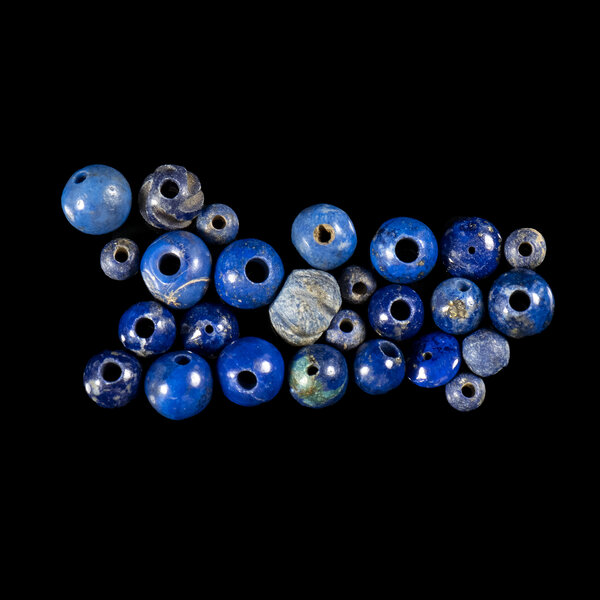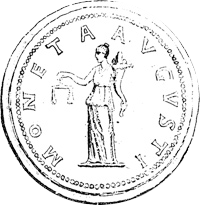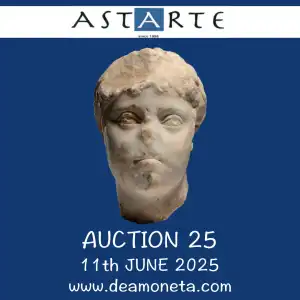



A GROUP OF RARE 26 EGYPTIAN LAPIS LAZULI, BLUE GLASS AND SODALITE BEADS.
New-Kingdom,ca. 1550-1069 BCE
L. min 4 mm / Max. 7 mm
Provenance
Formerly with, Saskia Wessel, 05.01.1984
Of rounded and ribbed shapes and pierced.The different materials of these beads are amazing sources and testimonies of the ancient egyptian knowledge on the nature and properties of the stones.. In Ancient Egypt the lapis lazuli was the most precious gemstone as it was considered a sacred stone connected to the gods. Its special dark-blue colour symbolized the night sky and the starry heavens.The most widely accepted concept is that the ancient Egyptian lapis lazuli originated from the Badakhshan Province (Afghanistan), however other new potential Asian extraction sites (Pakistan, Tajikistan, Lake Baikal area, Myanmar) were also suggested recently. This stone had reached Egypt most probably from Mesopotamia through trade routes, or could also be brought as a tribute from various localities like Assur, Babylon.
Extensive glass production in Egypt started as early as the Eighteenth Dynasty and the best deep blue glass beads were from the workshop of Tutankhamun.
As for the sodalite beads (very similar to the lapis without gilded pyrite inclusion), Although it was scientifically identified in the early 19th century, evidence suggests that ancient civilizations, including the Egyptians, valued it for its aesthetic and symbolic qualities, particularly for its resemblance to lapis lazuli.
However, direct archaeological evidence of sodalite in ancient jewelry is scarce, likely due to its rarity and frequent confusion with more commonly used blue stones like lapis lazuli. According to tradition, Egyptian priests used sodalite to dispel fear and promote mental clarity. In ancient times, sodalite was sourced from Afghanistan.


